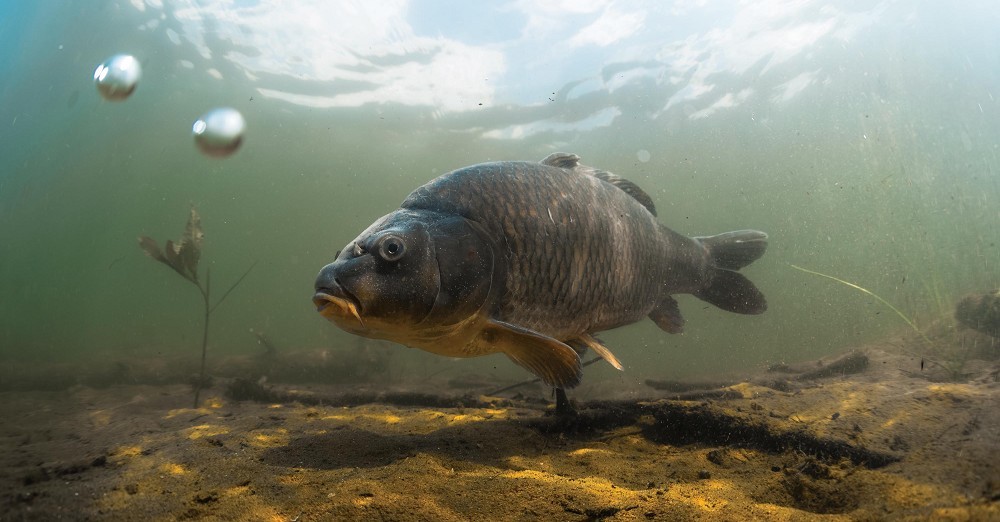
The Carp Part 2: The invasion of England
Carp fanatic and historian, Simon Blanford takes a look at the carp’s true origins and how it’s established itself as the UK’s favourite species
Many anglers like fishing for carp. The popularity of the fish is reflected in the number of fishermen who call themselves ‘carp anglers’, in the amount of dedicated carp waters, in the vast range of tackle aimed solely at a carp’s downfall, in the number of books dealing with the fish as well as the magazines, the ones focused on carp outnumbering any other singles species periodicals
It is somewhat surprising then that the fish’s origins – where it came from, when it arrived in England, what form it took when it got here – are so confused in contemporary angling literature both in print and across the various electronic media to which we now have access. The received view seems to be that carp arrived on these shores in the 1600s, possibly landing first in the waters of a Sussex landowner; that they were reared in monastery ponds for food (the Friday fish of the monks) and that they took the form of fully-scaled, slim, torpedo-shaped “wildies”. These three thoughts are, not to put too fine a point on it, inaccurate, only partly accurate and very unlikely to be accurate respectively.
Let’s take when they got to England first. As we saw in last month’s article, carp had risen to a prominent place in fish culture by the 1300s and further east by the 1400s on the European continent. Reared on a three- to six-year cycle they formed an important source of food and much effort was put into maintaining their production and the ponds in which they lived. In England fishponds were already well established as the carp began to be spread across continental Europe.
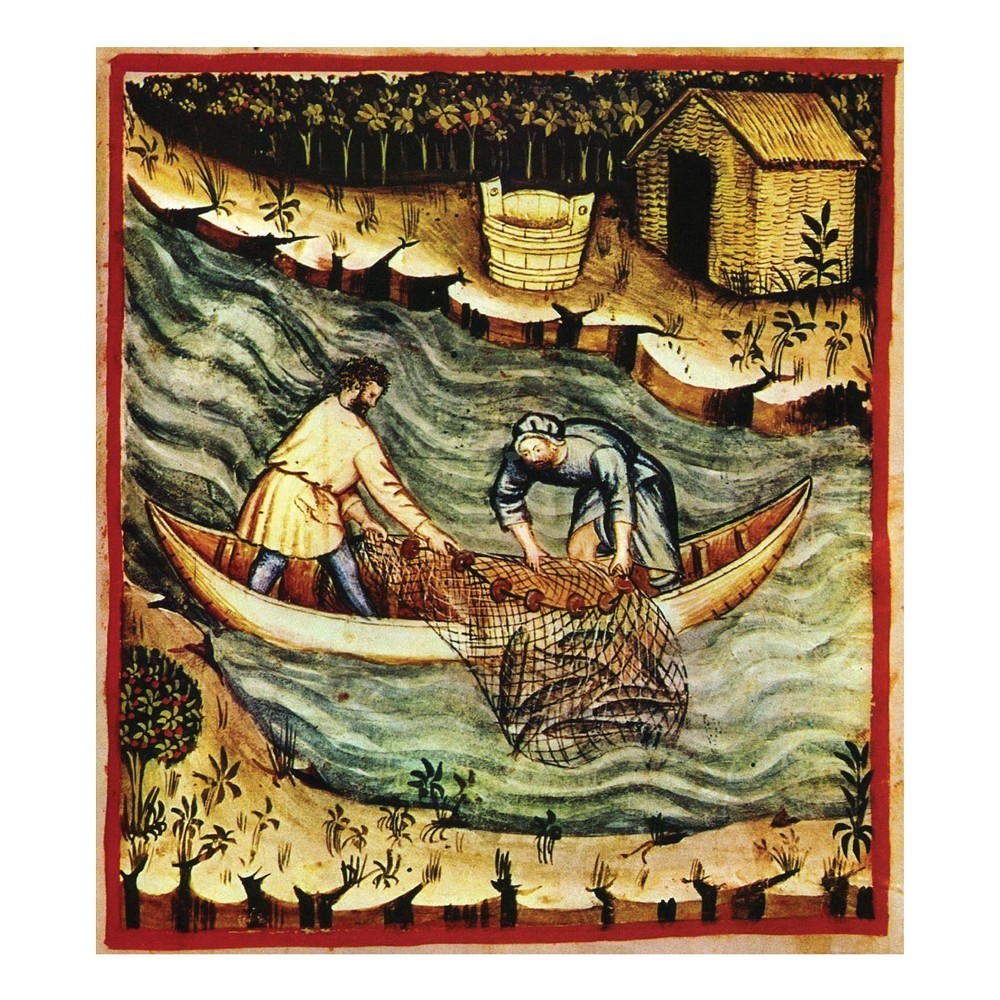 In the earliest days fishing was invariably for food not recreation (image from the 14th Century text, Tacuinum Sanitatis)
In the earliest days fishing was invariably for food not recreation (image from the 14th Century text, Tacuinum Sanitatis)When exactly was the carp brought across the channel to our shores then? The question has been the subject of some debate. We obviously know that Isaak Walton devoted some space to the fish in his famous book published in 1653. Further back in 1613, John Dennys wrote an odd little poetry book (‘The Secrets of Angling’) that also contained a description of how to fish for carp. And just over a hundred years earlier there is ‘Treatyse of Fishing with an Angle’, a section of the larger ‘Book of St Albans’ published by Wynkyn de Worde in 1496. The text, supposedly written by Dame Juliana Berners though in fact there likely never was such a person, mentions carp but goes on to say “there are only a few in England”. So it seems we can place the carp’s arrival on our shores to at least the 1490s.
But how much before that date can we go? The historian Christopher K. Currie tried to untangle the carp’s origins still further. He points out that there was an earlier manuscript of the Book of St Albans dating to about 1450. And then there are recipes and bills of sale from the king’s kitchen, which mention carp and that Currie argued were from sometime around the 1350s.
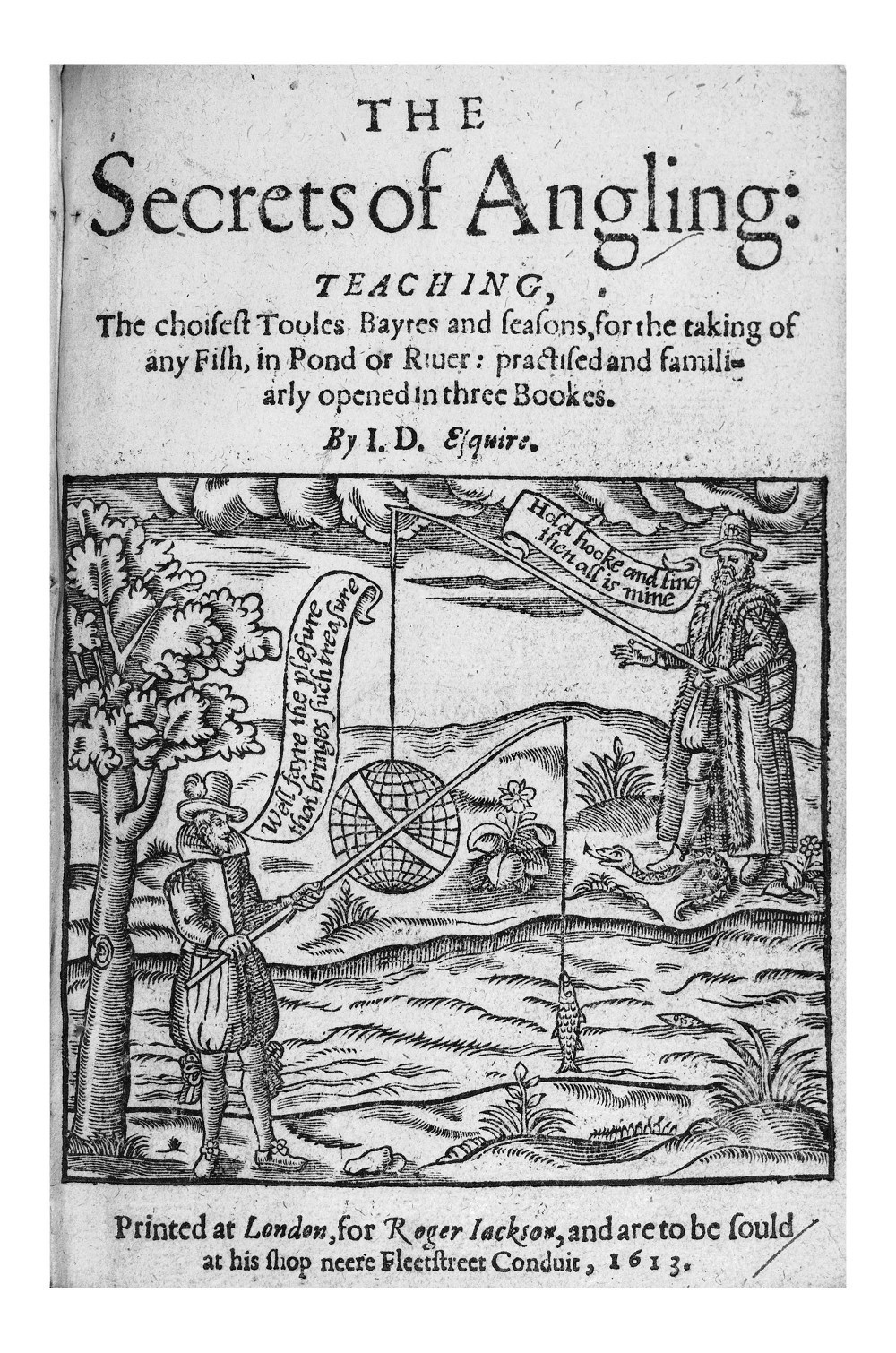 A woodcut from the 1496 ‘Treatyse of Fishing with an Angle’, the first English book to mention fishing for carp
A woodcut from the 1496 ‘Treatyse of Fishing with an Angle’, the first English book to mention fishing for carpIt is possible that carp arrived in England this early. They were certainly in our nearest neighbours, Belgium, France and Holland a short hop across the channel, around that time. But, ‘Bah!’ says the eminent fisheries and fishing historian Richard Hoffmann. “[F]actual errors mar …” Currie’s argument he writes and goes on to demolish any attempts to move the introduction of the carp earlier than there is good documented evidence to support. The earlier manuscript of the Book of St Albans doesn’t contain the relevant pieces from the Treatyse concerning carp he states and furthermore, the carp recipes from the king’s kitchen are unlikely to be as old as claimed given other contemporary records.
So despite these attempts to plonk the carp in our ponds and lakes in the 14th century, the fact is that the earliest verifiable account of carp comes from the records the Duke of Norfolk’s staff kept when they stocked his ponds with them in 1463. The relatively late arrival of carp on the English scene (compared to its spread across continental Europe) is somewhat confirmed in detailed records kept by a certain Prior William More on the management of his ponds and moat near Worcester between 1518 and 1536. Prior More stocked and harvested significant numbers of eels, tench, bream and roach with a few pike on the side. There is no mention of carp until he first stocks them in 1531 as something of a novelty. By 1600 though, carp had become well enough established that John Taverner, author of “Certaine Experiments concerning Fish and Fruites”, was convinced they should be given pride of place in fish ponds.
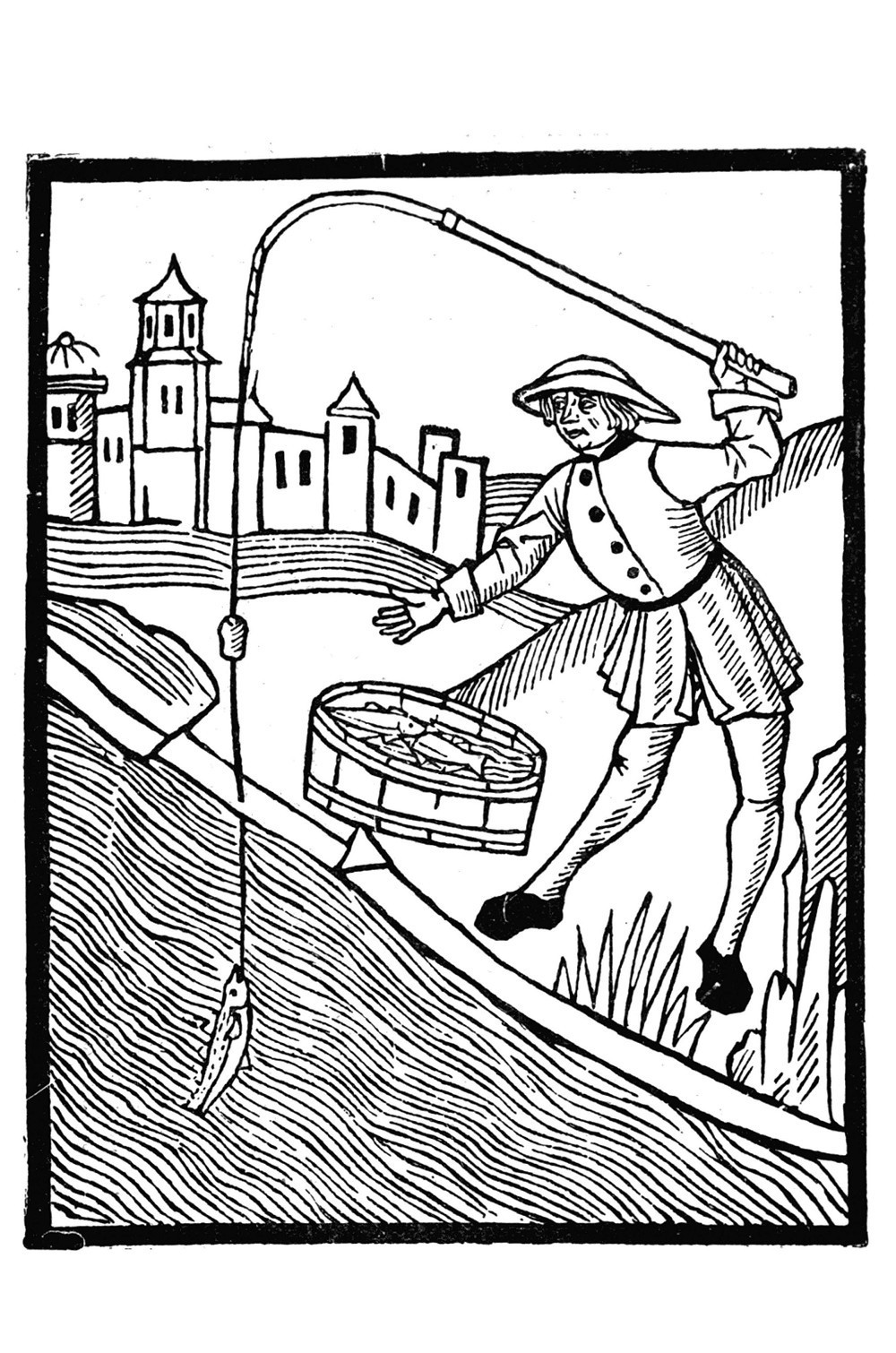 In 1613, John Dennys suggested an angler needed tackle of mythical strength to cope with carp in ‘The Secrets of Angling’
In 1613, John Dennys suggested an angler needed tackle of mythical strength to cope with carp in ‘The Secrets of Angling’Early attention on the carp was mainly concerned, just as it was on the continent, about their value as food. But England has always looked to the sea to provide much of its fish and so a widespread aquaculture system with carp as its main product did not develop to the intensity it did in Europe. But these carp didn’t disappear. They are adaptable colonisers and had already invaded natural waters and established homegrown populations.
Many assume that the carp we now know as “wildies”, or “Sussex snakes” as the fish farming guru and all round carper Simon Scott called them, were the original fish. But this is very unlikely to be true. Carp had already been farmed on the continent for more than two-hundred-years and it is a matter of record that the largest carp were kept back to generate fry for subsequent years. Furthermore records show that distinct mirror and leather carp strains were recorded as far back as 1550 and the continued production of these scale types is difficult without careful control of the fish used to spawn the next generation. It seems very unlikely that fish farmers would choose the fish carrying the least meat to provide the eggs and milt for subsequent generations. And the images lifted from angling books (examples in figures 4 and 5) don’t suggest that the artists used large headed, thin-bodied carp on which to base their drawings.What our ancient wild carp are, those “wildies” of old ponds and lakes, and whether they differ from ‘feral’ carp is an interesting question however, and one to be looked at in a later article.
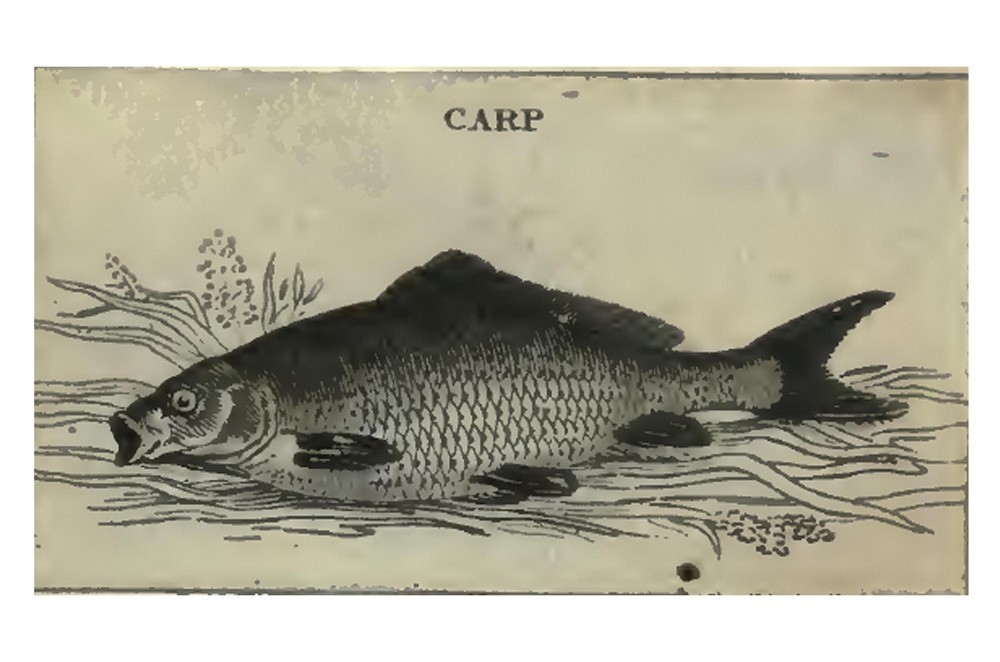 A depiction of a rather plump carp from Robert Venables ‘The Experienced Angler’ published in 1662. Doesn’t really look like a wildie does it?
A depiction of a rather plump carp from Robert Venables ‘The Experienced Angler’ published in 1662. Doesn’t really look like a wildie does it?What is true though is that large carp back then would seem moderate by our modern standards. Although Walton (repeating a story he probably read in Dubravius’s Czech book on fish and fish farming – see last month’s article), reports of hearing about carp of fifty-pounds swimming around in Italian lakes, the English version would have weighed considerably less. Kevin Clifford has listed some of the large carp he has found in the old literature in his book on the history of carp fishing. From these and other sources it seems that a good carp in Walton’s time and right through to the 1800s was a ten-pounder, a large fish a mid-double and an outsized fish approached twenty-pounds. Some were caught over twenty but these were very few and far between.
So carp were in England by the 1460s when they replaced bream and tench, the former favourites, in many fish farming operations. They weren’t yet the modern animal anglers catch today but a halfway carp, distanced by 200 years of cultivation from their wild ancestors roaming the Danube basin but not yet under the intense, gene driven cultivation methods of modern times. If carp were a popular food fish, gracing the king’s table no less, what did our fishing ancestors think of this European immigrant? As mentioned earlier, the ‘Treatyse of Fishing with an Angle’ called carp a “dainty fish” or, in the old type of the 1490s, a “daynteous fysshe”. But the mention is fleeting as “there ben but a few in Englonde, and thereforre I wryte the lesse of hym.”
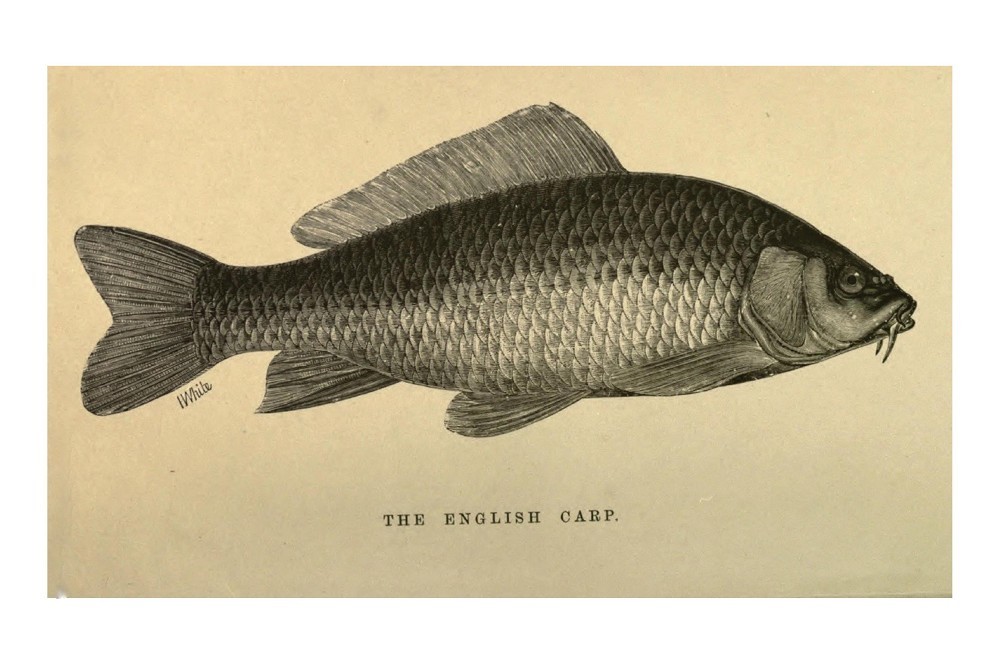 The classic form of the early English carp from Bickerdyke’s 1888, ‘The Book of the All-round Angler’
The classic form of the early English carp from Bickerdyke’s 1888, ‘The Book of the All-round Angler’As we’ve seen, Taverner liked carp but he was a farmer not a fisher and so we have to wait for John Dennys and his extended poem, “The Secrets of Angling” to find that a carp is “… so large… of body, scale, and bone, that rod and all had like to have been gone.” Here then is the start of the carp’s reputation for size and strength for Dennys adds that a fisherman’s line needs to be made from the hair of Bucephalus (Alexander the Great’s famous stallion) or Bayard, a mighty horse of 12th century legend, if anybody were to have any chance of landing one (it’s worth noting here that way back at the start of angling literature there are detailed instructions for how to dye your horse-hair line to match the colour of the water. There really doesn’t seem to be anything new in fishing – just old methods respun).
In 1653, arguably the most famous book in angling was published: The Compleat Angler by Izaak Walton. Walton wrote that carp are the “queen of rivers” but also added that they are “a very subtil fish”. He elaborates by saying he has “known a very good fisher angle diligently four or six hour in a day, for three or four days together, for a river carp and not have a bite.” So not only is the carp’s strength being noted, their cunning and wisdom is also being expounded.
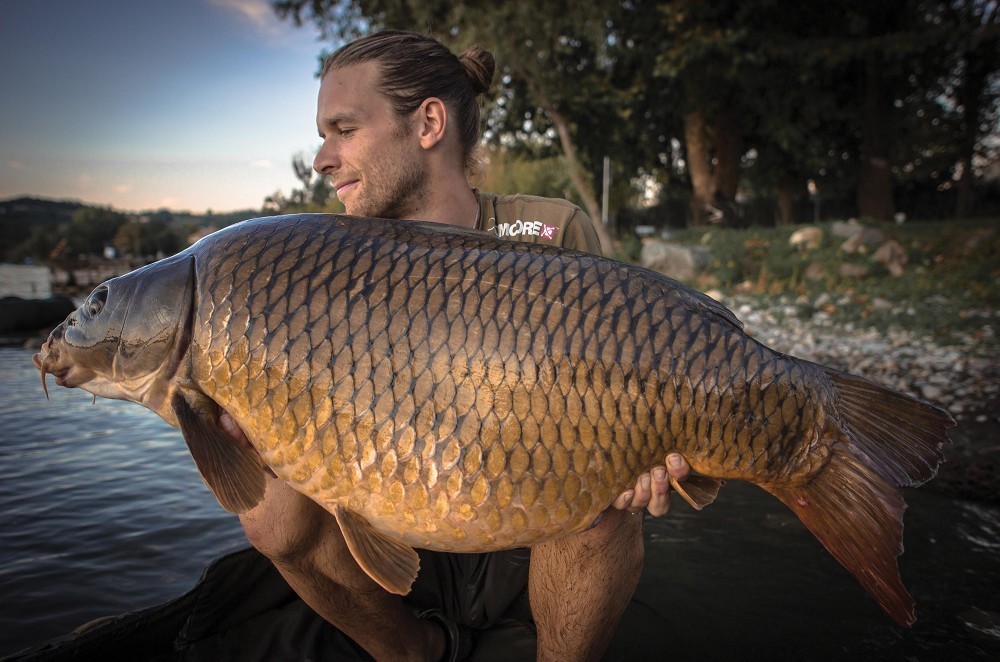 CARPology contributor, Alex Norgate with a chunk. A high-shouldered, deep-bodied common typical of the intensive selection modern carp have undergone
CARPology contributor, Alex Norgate with a chunk. A high-shouldered, deep-bodied common typical of the intensive selection modern carp have undergoneFor the next 250 years nothing much changed from Walton’s pronouncements. Colonel Robert Venables writing ‘The Experienced Angler: or Angling Improved’ in 1662, hardly mentions the fish. Robert Brookes’ ‘The Art of Angling’, published in 1790 does continue the idea of the clever carp saying “… carp exercises the angler’s patience as much as any fish, for he is very fly and wary[.]” but repeats much of what Walton had to say a century earlier. William Daniel in his two volume ‘Rural Sports’, published in the early 1800s, adds his own take on the astuteness of his quarry: “[T]he carp is gifted by nature with such cunning as to be on that account by some termed the freshwater fox...”. John Bickerdyke nearly 90-years later throws more fuel on the fire. “[N]o fish is found in the British Isles which has a larger brain, or is more difficult of capture, […] than the common-carp[.]” he wrote in his ‘The Book of the All-Round Angler.’ My scientific leaning wonders how many carp brains Bickerdyke actually looked at to draw such a conclusion. But we’ll leave that for the moment.
At the start of the 20th century the carp’s reputation for strength and for its sagacity is firmly established. In 1912 that marvellous angling writer Hugh Tempest Sheringham muses, “[F]or practical purposes there are big carp and small carp. The latter you sometimes hope to catch without to great a strain on your capabilities. The former – well, men have been known to catch them…” He goes on to say ‘that while some may use skill and pertinacity” he relies “entirely on luck”. His advice, in one of my favourite passages in angling literature, is to cultivate this luck, “[w]atch for magpies on your path. Form the habit of avoiding old women who squint. Throw salt over your left shoulder. Touch wood with the forefinger of your right hand whenever you are not doing anything else. Be on friendly terms with a black cat. Turn your money under the new moon. Walk round ladders. Don’t start on a Friday. Stir the materials of Christmas pudding and wish. Perform all other such rites as you know or hear of. These things are important in carp-fishing.”
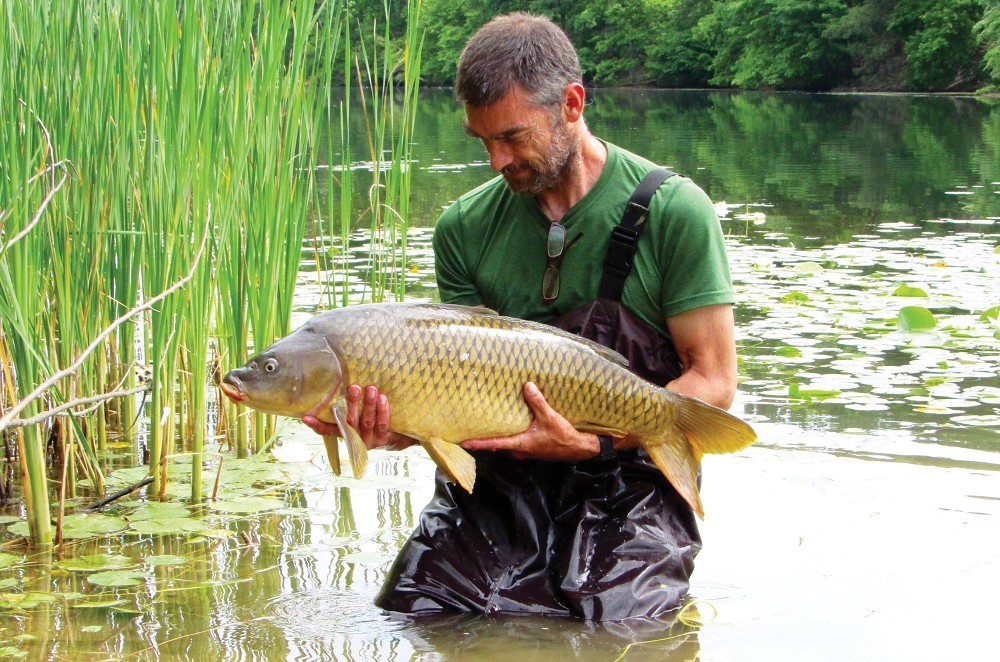 The author with a wild (or perhaps more accurately, ‘feral’) common. Longer, slimmer and larger finned, it and its ancestors have been out of cultivation and living in the wild for 150 years. A fish that is closer to the shape of the original carp of England though it still does retain some signs of its cultivation history
The author with a wild (or perhaps more accurately, ‘feral’) common. Longer, slimmer and larger finned, it and its ancestors have been out of cultivation and living in the wild for 150 years. A fish that is closer to the shape of the original carp of England though it still does retain some signs of its cultivation historyArthur Ransome, writing his fishing column for the Manchester Guardian in the 1920s, articles that were later collected into the wonderful volume ‘Rod and Line’ published in 1929, carried on the tradition of angler-extolling-the-cleverness-of-carp with just as light and sure as touch as Sheringham. He wrote, “a man who fishes habitually for carp has a strange look in his eyes”, a view that might be applied to many contemporary carpers. He went on to point out the perennial problem faced by those old anglers: “…carp are immensely strong. To hold them safely you need stout gut, but to use stout gut is to throw away most chances of having a carp to hold.”
Finally, in what we might see as the last of the old era, we get to that most eloquent addict, B.B., who co-opted de Quincy’s famous title to best sum up his obsession in ‘Confessions of a Carp Fisher’ (1950) and wrote that carp were “…mysterious, shrewd-brained fish…”. Right up until the late 1950s then it was pretty much taken as read that carp lived on a different plane to other fish. They were clever, wise even, and their capture needed not only strong tackle but also extensive preparation and sometimes carefully concocted baits. This deeply held belief in the wisdom of carp began to change at the end of the 1940s and the beginning of the 1950s when serious carp anglers challenged the received wisdom. Even while B.B. was maintaining the idea of the clever carp one of his regular fishing partners was successfully dismantling it. Richard Walker, aided by his consummate angling ability, his inventive, engineering trained mind and the post-war technology boom, if not quite sounding the death knell of past anglers’ romantic notions about carp, certainly questioned what all the fuss was about. In his discursive and wonderfully readable, ‘No Need to Lie’ he wrote, “[D]uring my schooldays and for some years after the Second World War, the carp was the subject of more misconception than any other fish. It was supposed to take a hundred years to grow big; to be nearly impossible to catch, biting only if the tackle was ultra-fine and then breaking away… a noted editor said that life was too short to even contemplate carp fishing.” He then skewers this traditional view by drily adding, “If I hadn’t caught several large carp, and seen much larger ones before I read or heard all this, I might have believed them.”
Later developments, particularly the Hair and bolt rigs, as well as the increasing alchemy of the bait-makers, further stripped away the mystique of the fish and with the fish’s strength tamed by modern gear we now wonder at the carp’s intelligence. Was it just inferior technology and a lack of insight into the fish’s behaviour that perpetuated the sense of a carp’s special place? Or are carp really different, are their bright, quick studies able to learn about and avoid baits and rigs? And do our patchy captures reflect something about the individuality of each fish: do they have different personalities one from the other, some shy and fearful, others bold and brave. Indeed is this manifest in their strains - are commons really harder to catch than mirrors?
Fishermen, it has to be said, are not the best people of whom to ask these questions. Of course we accumulate a great deal of knowledge but that knowledge tends to the idiosyncratic. Each angler has his or her own view and there is always considerable conjecture, surmise and plain guesswork leading to a variety of explanations of carp behaviour. One only has to look at the articles here in CARPology to see how much views differ on whether commons are harder to catch than mirrors for example, or whether carp really are clever. This is part of the fun of fishing, the great melting pot of opinion and conjecture. But it’s also good to look outside the experiences of anglers every now and then.
For the next few articles we’ll be having a look at what scientists may have to say about carp; those biologists, behavioural ecologists and physiologists who, for one reason or another, have looked at the way carp behave, eat and even respond to our attempts at trying to catch them. No graphs or equations though. Probably.





